Enermax Revolution SFX 650W PSU Review
Why you can trust Tom's Hardware
Transient Response Tests
Advanced Transient Response Tests
For details on our transient response testing, please click here.
Ιn these tests, we monitor the ERV650SWT's response in several scenarios. First, a transient load (10A at +12V, 5A at 5V, 5A at 3.3V, and 0.5A at 5VSB) is applied for 200ms as the PSU works at 20 percent load. In the second scenario, it's hit by the same transient load while operating at 50 percent load.
In the next sets of tests, we increase the transient load on the major rails with a new configuration: 15A at +12V, 6A at 5V, 6A at 3.3V, and 0.5A at 5VSB. We also increase the load-changing repetition rate from 5 Hz (200ms) to 50 Hz (20ms). Again, this runs with the PSU operating at 20 and 50 percent load.
The last tests are even tougher. Although we keep the same loads, the load-changing repetition rate rises to 1 kHz (1ms).
In all of the tests, we use an oscilloscope to measure voltage drops caused by the transient load. The voltages should remain within the ATX specification's regulation limits.
These tests are crucial because they simulate the transient loads a PSU is likely to handle (such as booting a RAID array or an instant 100 percent load of CPU/GPUs). We call these "Advanced Transient Response Tests," and they are designed to be very tough to master, especially for a PSU with a capacity of less than 500W.
Advanced Transient Response at 20 Percent – 200ms
| Voltage | Before | After | Change | Pass/Fail |
|---|---|---|---|---|
| 12V | 12.124V | 12.006V | 0.97% | Pass |
| 5V | 5.021V | 4.937V | 1.67% | Pass |
| 3.3V | 3.313V | 3.172V | 4.26% | Pass |
| 5VSB | 5.007V | 4.964V | 0.86% | Pass |
Advanced Transient Response at 20 Percent – 20ms
| Voltage | Before | After | Change | Pass/Fail |
|---|---|---|---|---|
| 12V | 12.125V | 11.964V | 1.33% | Pass |
| 5V | 5.021V | 4.927V | 1.87% | Pass |
| 3.3V | 3.313V | 3.142V | 5.16% | Pass |
| 5VSB | 5.007V | 4.954V | 1.06% | Pass |
Advanced Transient Response at 20 Percent – 1ms
| Voltage | Before | After | Change | Pass/Fail |
|---|---|---|---|---|
| 12V | 12.123V | 11.948V | 1.44% | Pass |
| 5V | 5.020V | 4.937V | 1.65% | Pass |
| 3.3V | 3.313V | 3.119V | 5.86% | Fail |
| 5VSB | 5.007V | 4.964V | 0.86% | Pass |
Advanced Transient Response at 50 Percent – 200ms
| Voltage | Before | After | Change | Pass/Fail |
|---|---|---|---|---|
| 12V | 12.076V | 11.955V | 1.00% | Pass |
| 5V | 4.987V | 4.901V | 1.72% | Pass |
| 3.3V | 3.288V | 3.154V | 4.08% | Pass |
| 5VSB | 4.970V | 4.913V | 1.15% | Pass |
Advanced Transient Response at 50 Percent – 20ms
| Voltage | Before | After | Change | Pass/Fail |
|---|---|---|---|---|
| 12V | 12.076V | 11.905V | 1.42% | Pass |
| 5V | 4.987V | 4.902V | 1.70% | Pass |
| 3.3V | 3.288V | 3.124V | 4.99% | Fail |
| 5VSB | 4.969V | 4.906V | 1.27% | Pass |
Advanced Transient Response at 50 Percent – 1ms
| Voltage | Before | After | Change | Pass/Fail |
|---|---|---|---|---|
| 12V | 12.075V | 11.895V | 1.49% | Pass |
| 5V | 4.987V | 4.890V | 1.95% | Pass |
| 3.3V | 3.288V | 3.135V | 4.65% | Fail |
| 5VSB | 4.970V | 4.913V | 1.15% | Pass |
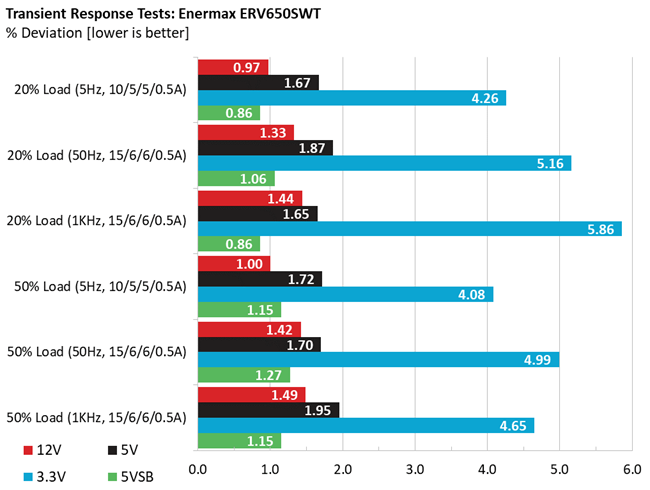
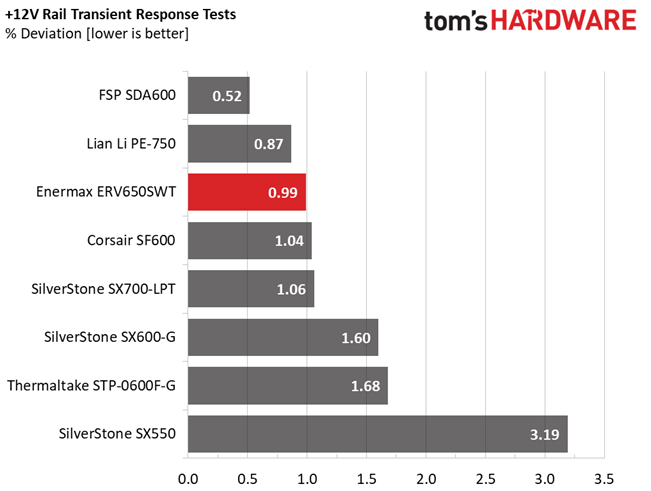



The transient response of the +12V rail is quite good; the same goes for the 5V and 5VSB rails. Conversely, the 3.3V rail doesn't fare well in these tests.
Get Tom's Hardware's best news and in-depth reviews, straight to your inbox.
Here are the oscilloscope screenshots we took during Advanced Transient Response Testing:
Transient Response At 20 Percent Load – 200ms


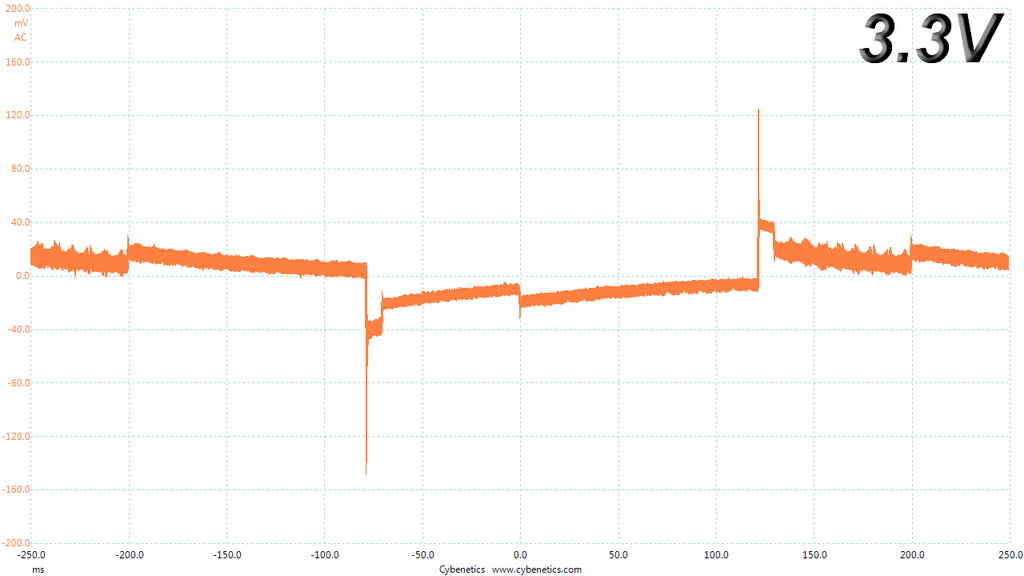

Transient Response At 20 Percent Load – 20ms
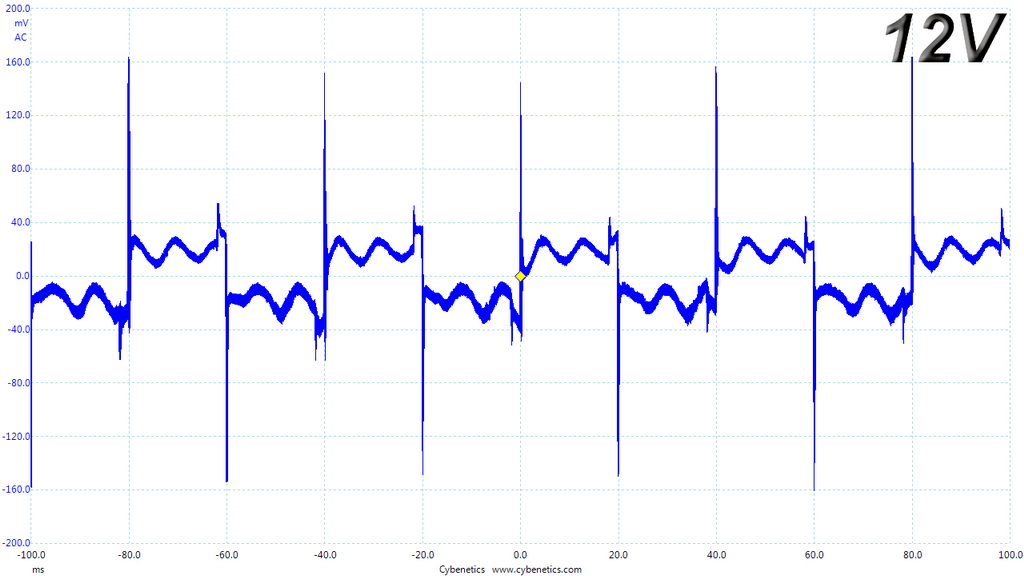


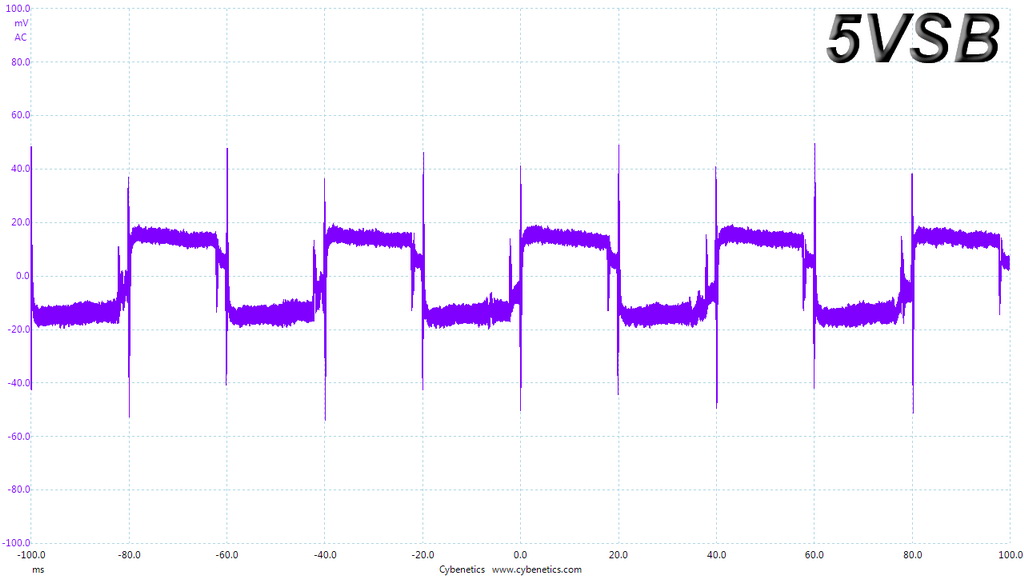
Transient Response At 20 Percent Load – 1ms
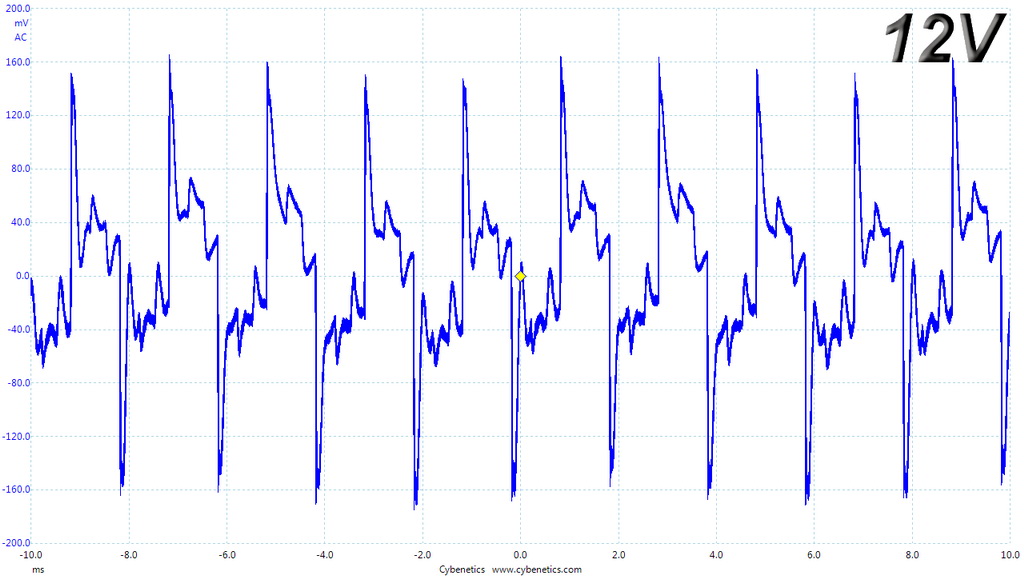

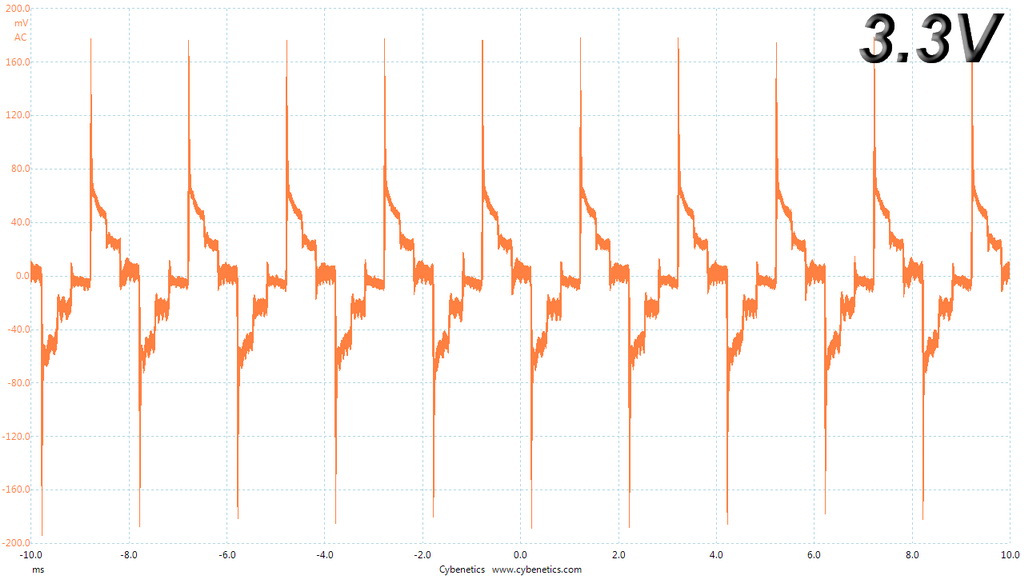
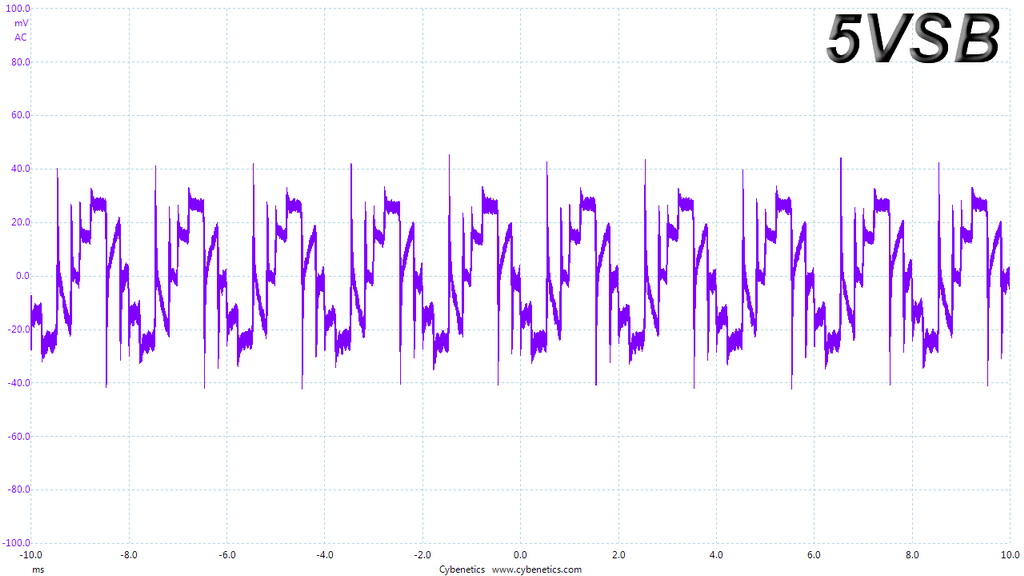
Transient Response At 50 Percent Load – 200ms
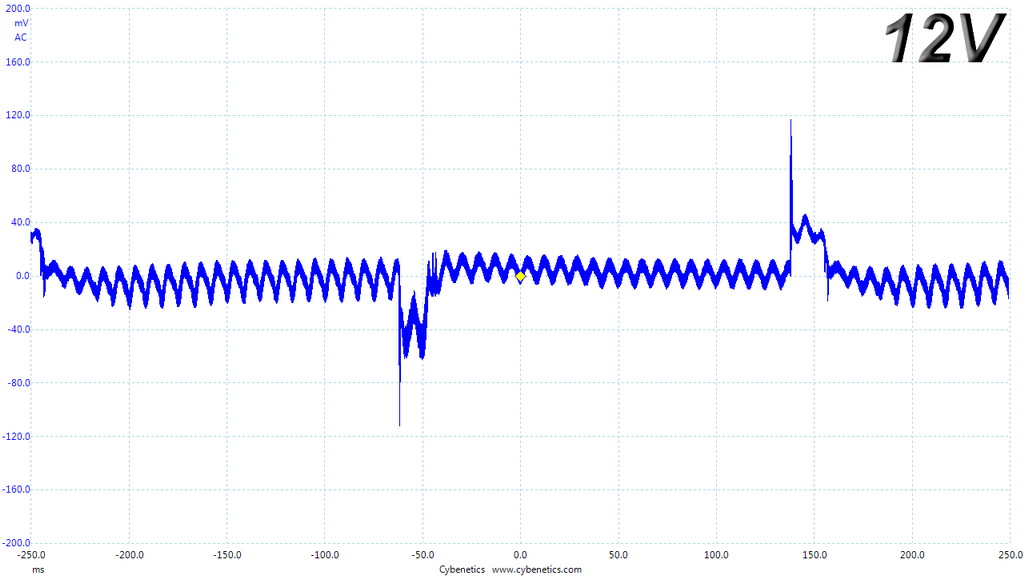


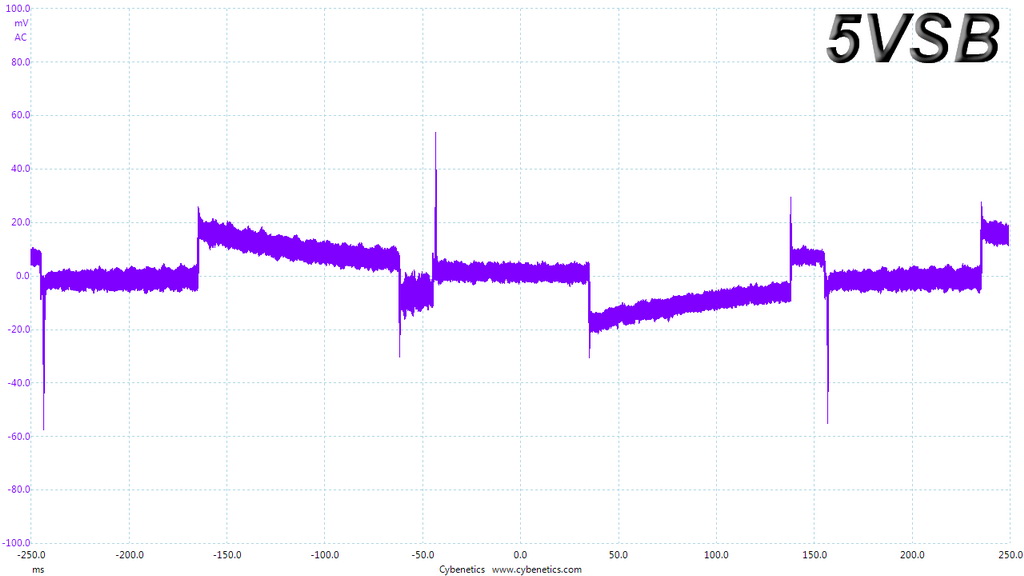
Transient Response At 50 Percent Load – 20ms
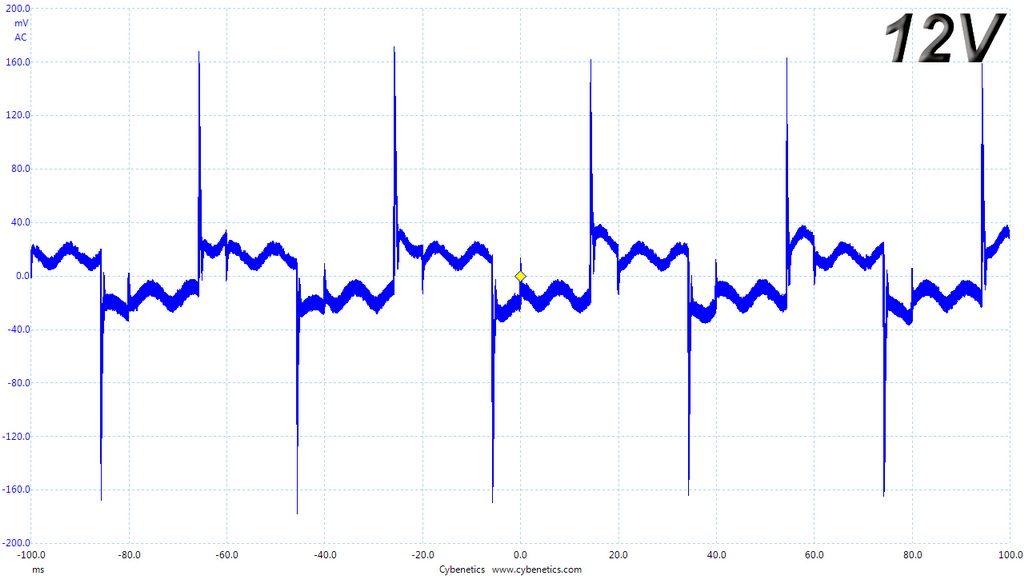
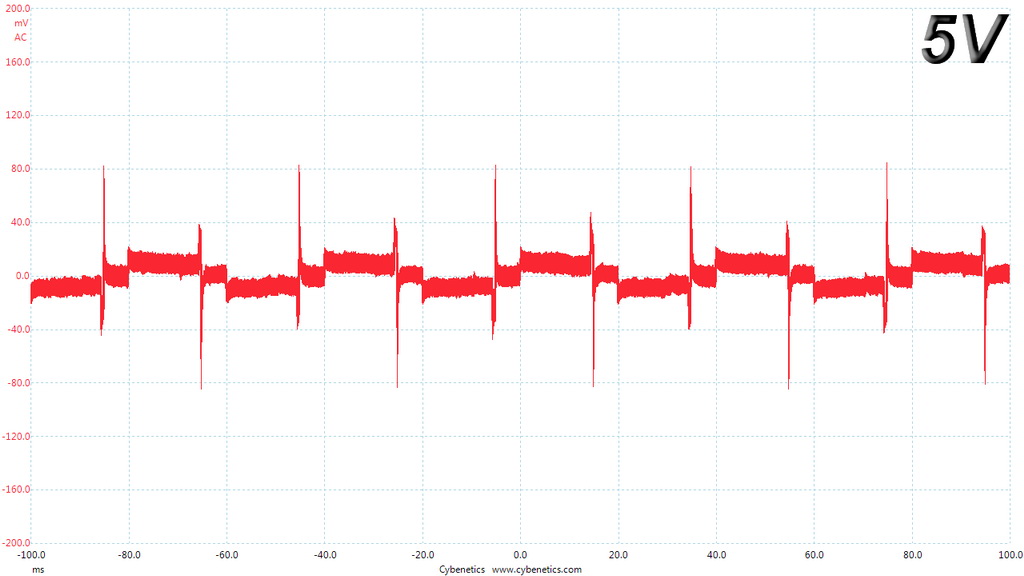

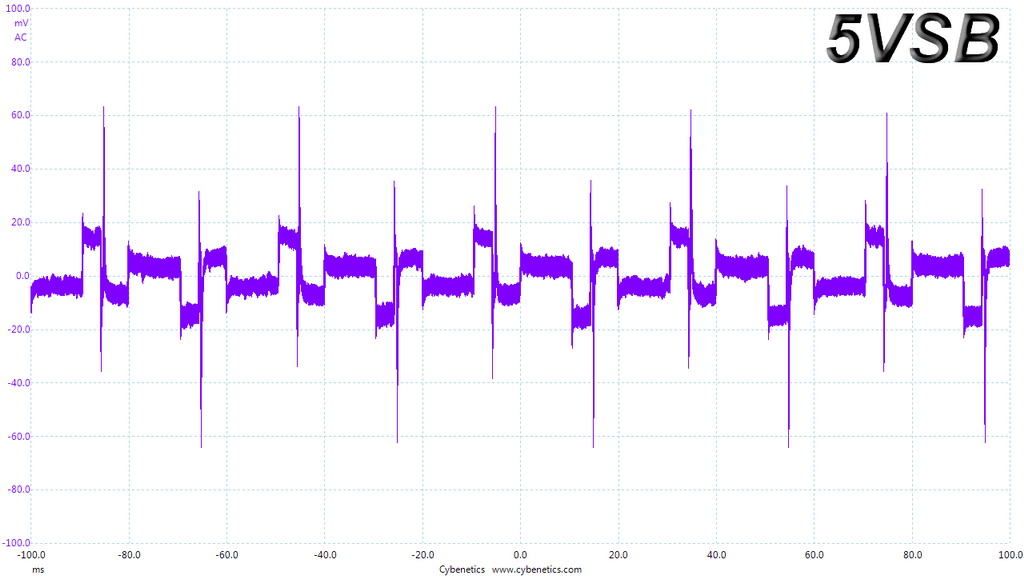
Transient Response At 50 Percent Load – 1ms
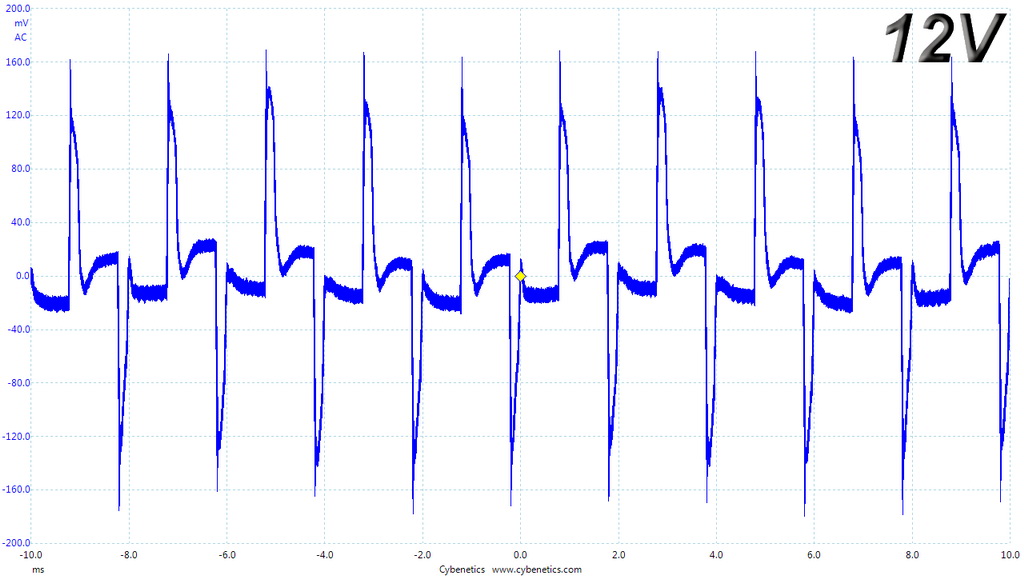
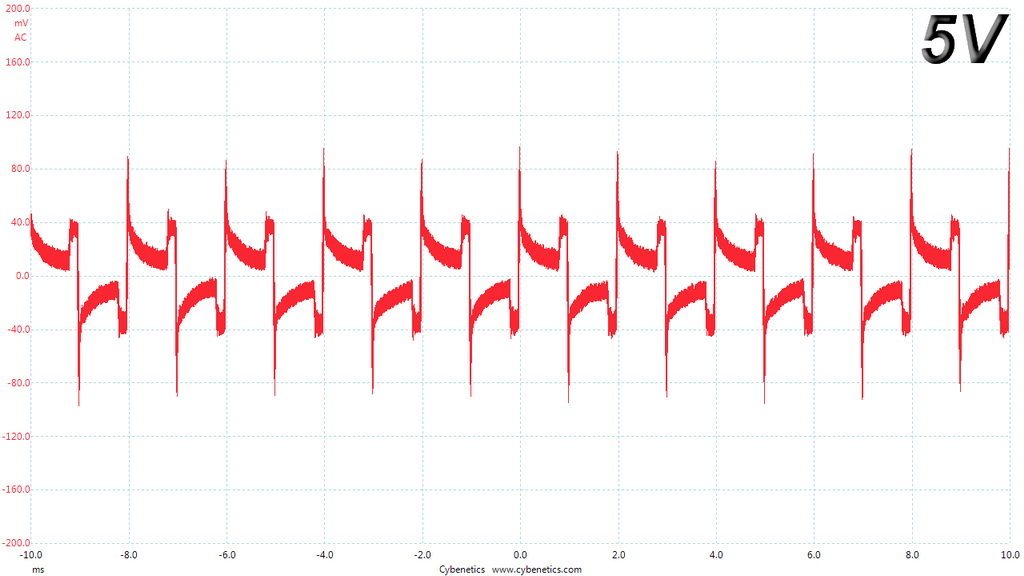
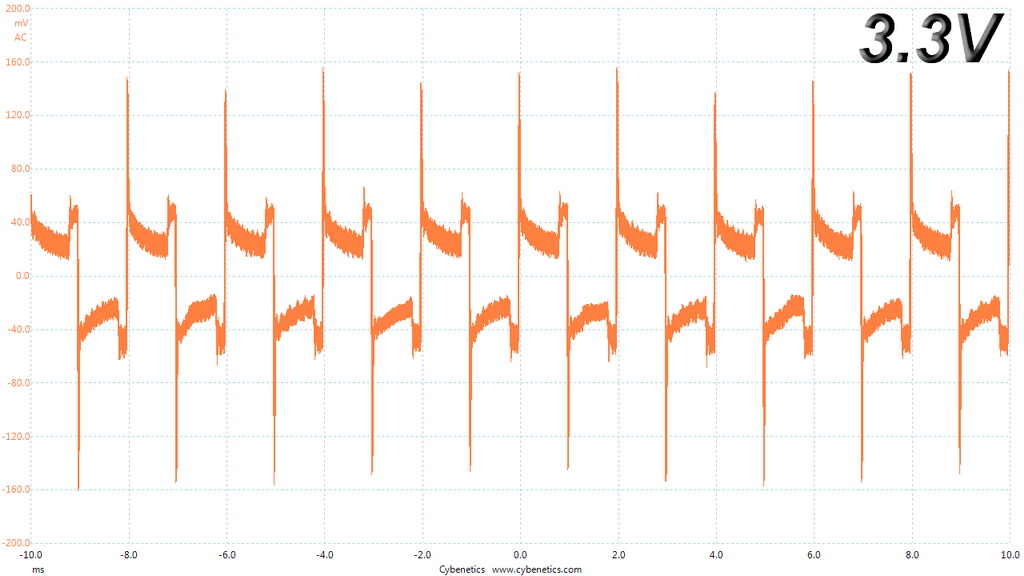
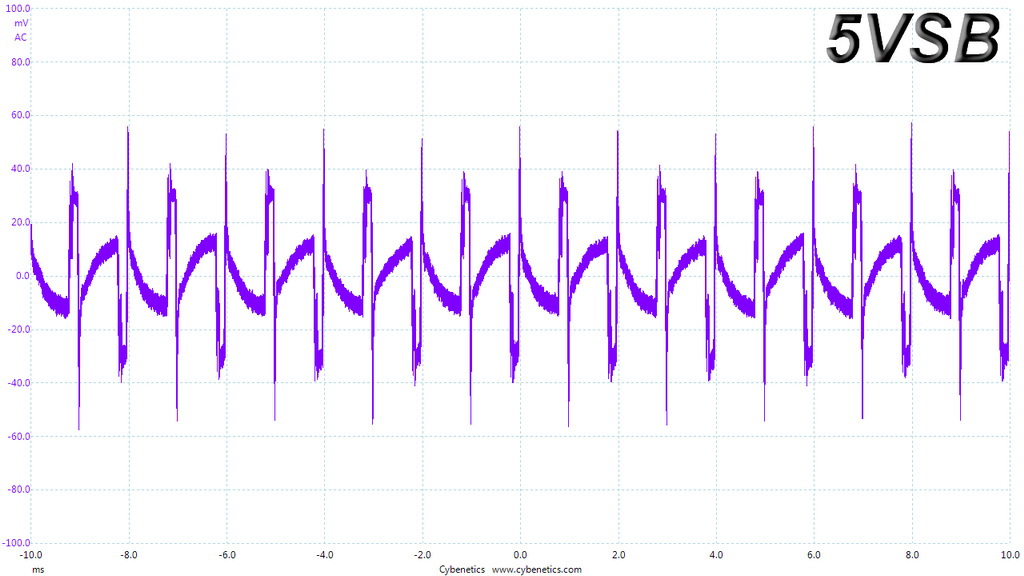
Turn-On Transient Tests
In the next set of tests, we measured the ERV650SWT's response in simpler transient load scenarios—during its power-on phase.
For the first measurement, we turned the ERV650SWT off, dialed in the maximum current the 5VSB rail could output, and switched the PSU back on. In the second test, we dialed the maximum load the +12V rail could handle and started the 650W supply while it was in standby mode. In the last test, while the PSU was completely switched off (we cut off the power or switched off the PSU by flipping its on/off switch), we dialed the maximum load the +12V rail could handle before switching it back on from the loader and restoring power. The ATX specification states that recorded spikes on all rails should not exceed 10 percent of their nominal values (+10 percent for 12V is 13.2V, and 5.5 V for 5V).

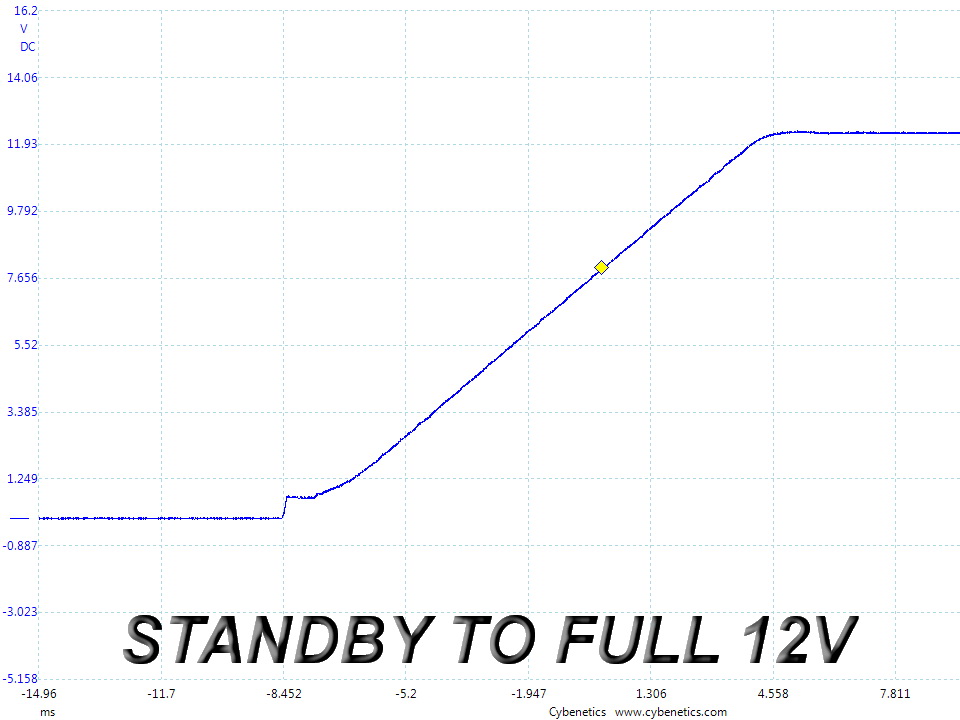

The performance at 5VSB is very good. We only see a spike during the last test at +12V, after the rail's voltage settles down. This isn't anything to worry about, though.
MORE: Best Power Supplies
MORE: How We Test Power Supplies
MORE: All Power Supply Content
Current page: Transient Response Tests
Prev Page Cross-Load Tests & Infrared Images Next Page Ripple Measurements
Aris Mpitziopoulos is a contributing editor at Tom's Hardware, covering PSUs.
-
shrapnel_indie How many motherboards require more than one EPS connector in the entry to enthusiast level motherboards (excluding server boards)? How many server boards? How many enthusiasts actually use server boards?Reply
IMHO, if a PSU has 1 or 2 EPS connectors shouldn't be a pro or con as the vast majority of boards used from entry level to enthusiast only really requires one connector. Server boards are a different matter. IMHO, just making a clear note how many EPS connectors should be good enough. -
TMTOWTSAC I can see wanting more than 2 PCIe of course, but how many SFX models come with 2 EPS? How many dual CPU micro atx mobos are there anyway?Reply -
Ne0Wolf7 Why would you ever want there not to be a power switch? I use mine all the time... It seems like such a simple thing to add too.Reply -
10tacle ^^That's the first thing I noticed in the pictures. I use mine on occasion too, especially when getting lockups during overclock testing. Flicking a switch is a lot more convenient than reaching around and unplugging and making sure the cable doesn't fall down behind the desk causing colorful four letter language. Unwise omission that is inexcusable in this category of PSU. I would rule out this PSU just for that omission alone.Reply
-
Aris_Mp about the two EPS connectors, most mid to high-end mainboards use one EPS and one ATX12V (so they need two CPU connectors) especially the new ones. Why not have this option and be restricted to mainstream mainboards. Not only server or dual CPU mainboards require two EPS connectors.Reply -
Marcus52 Enermax still hasn't recovered their quality since they shut down their own production facilities, which is a real shame, they used to be one of the best.Reply -
superflykicks03 You guys literally have ads that play over the top of your intrusive popup videos. You literally have to watch a 30 second ad before you get to watch the unwanted video :/ Not exactly user friendly. I know I know revenue blah blah, and just get a popup blocker yadda yadda.Reply -
maxwellmelon Why would you turn off the power on the power supply on computer lockup. Just hit the reset switch. I would venture to say 9 out of 10 people could care less as there pc is always on.Reply -
10tacle Because hitting reset from the case button does not guarantee a solid reboot. On my system anyway.Reply -
warmon6 For an SFX psu, not having a power switch on the PSU doesn't bother me to much.Reply
Depending on the case design (like my rvz01), you couldn't access the psu without taking the computer apart to access that switch. So unplugging the computer or holding the power button for 5 seconds would be a lot faster.
Now if this was an ATX PSU i would give a bit more care for as it's extremely rare for an ATX psu to be placed somewhere else inside the case that cant be access from the outside.
@10TACLE
I do have to ask though, does your computer lock up so much that even holding the case power button for the 3 to 5 seconds does nothing?
Most computers I've messed with seems to be able to power off fully even when there is a hard lockup doing that method.
But i do agree with you about that hitting a reset doesn't guarantee a solid reboot. Certainly when trying to dial in overclock settings.